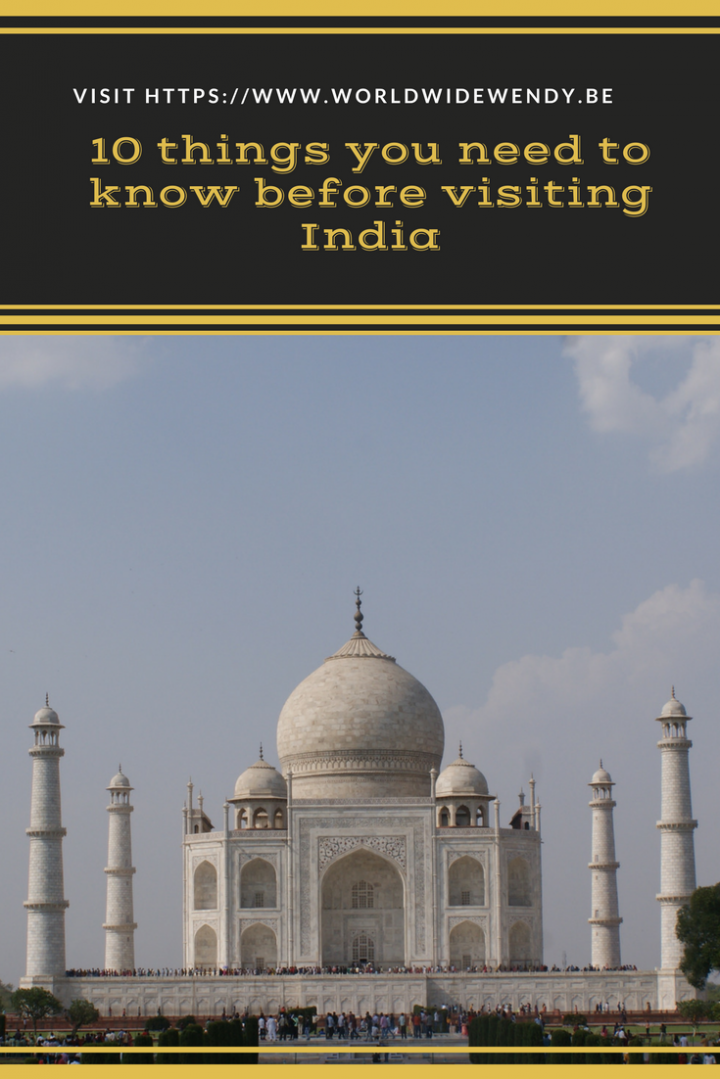Do you dream of traveling to India? Please don’t be stopped by the many prejudices and negative stories about this beautiful country. It is not a destination for newbies, but with the following tips, you are completely prepared for your journey to the Indian subcontinent.
1. Passport and visa
- Your reason for traveling is tourism, business or medical
- Your stay is shorter than 60 days

2. Medical information
- Yellow fever: If you travel from Europe to India, you don’t need a yellow fever injection. If you come from a country that has yellow fever, you need to be vaccinated.
- Malaria: Some areas have a malaria risk. Make sure you are informed.
- Dengue and Chikungunya are transmitted by mosquitos, but there is no vaccine. Proper protection against mosquitos is essential.
- Zika virus: This virus is also transmitted by mosquitos. It is most dangerous for pregnant women. There is no vaccine.
- A Hepatitis A jab is compulsory in Asia. If you travel often, I would suggest you also get vaccinated for Hepatitis B.
- Ensure you are up to date with your tetanus injections.

3. Diarrhoea
Whenever I thought of India, this was the first thing that came to mind. We are now back from a week in India, and I did not suffer with it at all. And when you take into consideration that I have Crohn’s disease, doesn’t this sound like a miracle? I am convinced you can survive India without tummy trouble if you’re careful.
- It might be more difficult for backpackers, but if you go to the better hotels, you limit the risk considerably.
- Wash your hands regularly (I always carry an anti-bacterial gel in my handbag).
- Do not eat raw salads, no fruit that has been washed (you can eat fruit with a thick skin like bananas, oranges… but no grapes etc.), no ice cubes, no ice cream…
- Only drink water from bottles that you opened yourself, or that you witnessed being opened.
- Brush your teeth with bottled water.
- And although I love street food and it often looked delicious, I let it pass me by in India. If you do want to try it, eat something that you can see being cooked on the spot (so that you know it was heated properly).
In case you do end up with Delhi Belly, make sure you have immodium or enterol with you. And ask your GP for a prescription for an anti-biotic in case you get a really bad dose.

4. Indian Traffic
I have travelled to more than 60 countries in my life, but nowhere have I seen more chaotic streets as in India. Considering India has 1.3 billion people, it is not strange that it is so busy everywhere. Our guide described it perfectly:
On the roads in India you need three things: Good brakes, good horns and good luck.
There are cars, trucks, tuk-tuks and camel carts. Add a few roaming cows and pigs and you get some idea. Everyone uses their horns like mad. Driving on the wrong side of the road is also no problem. Just check to see who has the most nerve which determines who keeps going longest. Crossing the road is attempted suicide, by the way. We asked around to see how many people die in traffic yearly but answering it was generally avoided.
5. Selfies
People of India look up to “white” people. They think it is a great thing to take a selfie with you. I experienced this when I was nearly mobbed by a gang of students who all wanted to take a photo with me at the Ranthambore Fort. The first time it flatters the ego, but the novelty had worn off after 10 selfies with grinning Indian teenagers.

6. Holy cow.
The cow is a holy animal, and it is released as soon as it no longer gives milk. The animals are fed everywhere and spend their days on the streets. Some will just sleep in the middle of the road.

7. Scarf
Make sure you always have a scarf to cover your head in case you want to visit a temple. Take off your shoes before entering.
For more information check out this guide on what else to take to India with you..

8. Only man shake hands.
9. Left hand and foor are unclean.
10. Pointing, whistling and winking are impolite.
Pin this one for later!

Looking for a good travelguide?
